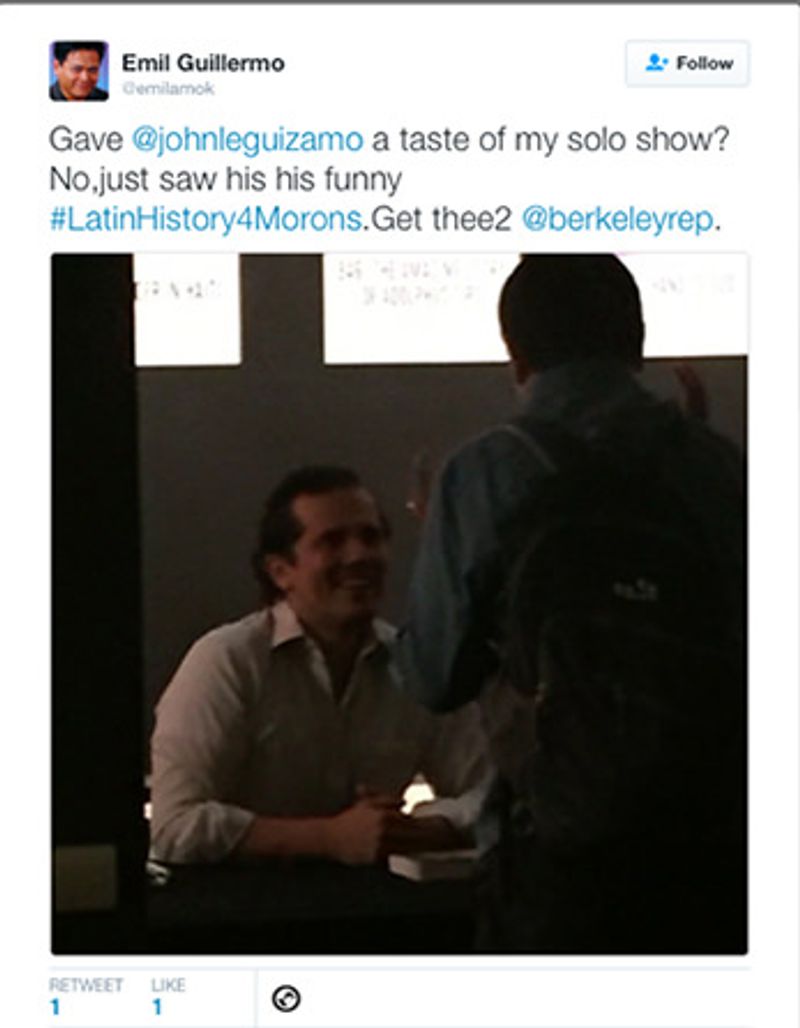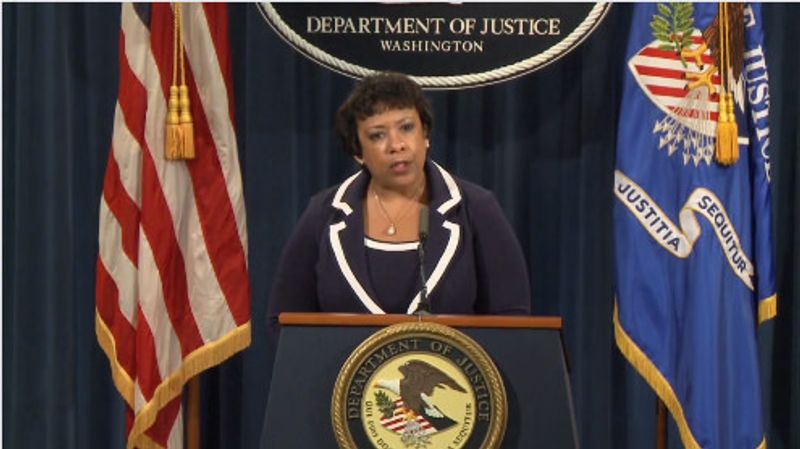Blog
On John Leguizamo, colonial mentality, and Dallas
When Dallas happened, I was already upset by the shootings all over the world this summer, from Bangladesh to Baton Rouge and Minnesota. But I was in Berkeley, Calif., where I was hoping a little art would help.
Berkeley already puts me in another world. But I was in yet another subworld because I was sitting in an American regional theater way off Broadway, the Berkeley Rep, watching a live theatrical performance. No video shield, no digital connect. This was real, human to human.
The way life’s supposed to be.
Up on stage live, alone with the audience, armed only with wit and style, was the actor John Leguizamo, making history right: getting after Cortez for slaying Montezuma; excoriating Pizarro for devastating the Incans; clowning Columbus for thinking he was in India. Leguizamo didn’t cover Magellan, who was boating in Asia until the Filipinos–the world’s only Aspanics (though some may prefer Astinos)–took care of him.
But the focus of Leguizamo’s show is the truth-side up history of the colonization of the Americas. Although Magellan may get a pass, “Latino History for Morons,” now at the Berkeley Rep, is worth seeing as it works its way east to NYC.
As a journalist, I’ve interviewed Leguizamo before, and I’ve also seen him pop out of my video screen (hell, explode is more like it). But I’ve never seen him perform live. Now that I have been performing my own solo show, “All Pucked Up: The Short History of the American Filipino,” it’s definitely a treat to see Leguizamo’s virtuosity used to defile the oppressor.
He powerfully commanded the stage in an energetic, physical performance that exposed all the colonial misdeeds that screwed up the Americas some 500 years ago.
And he undoes all that history in less than 90 minutes.

But then Leguizamo’s solo show ended, and so did the idealized world of my imagination.
Micah Xavier Johnson’s solo world took over.
The “us” versus “them” world. The colonial world, where violence and death is often the only answer.
The arts would be my oasis for only so long. Life disrupted my time with the arts.
It was back to reality. Back to the news.
Even Leguizamo had to pause.
#DallasPoliceShooting I always say that non-violence is not the weapon of the weak. It is the weapon of the strong. — John Leguizamo (@JohnLeguizamo) July 8, 2016
BIG D
As I drove back home from Berkeley to the Texas part of California, I was riveted to the live audio of MSNBC through Sirius XM.
I just couldn’t believe it was still unfolding deep into the night. Every bit of downtown sidewalk they talked about I knew first hand. From Dealey Plaza to Main Street, to El Centro College.
I could remember it all from my time as a somewhat green, curly-haired TV reporter in Dallas, my office at Union Station at the foot of downtown.
Truth is, I loved Dallas. I made some good friends at the time and worked with good people, including CBS Evening News anchor Scott Pelley.
And even though people often mistook me for Latino–asking me to join LULAC and then wondering WTF was a Filipino–it was a great place to be a young reporter.
A lot of firsts for me. My first 5-alarm fire. My first rape-murder confession. My first stalker (stalking me). My first big-time prison riot. My first mass murderer (Alvin Lee King, five victims, June 1980. He went into a church in E. Texas, declared, “This is war,” then opened fire with his AR-15.)
There were some pleasant firsts too. But Big D always meant Big news stories.
I know what I was like covering them as a 25-year-old, the same age as Micah Xavier Johnson, the former Army reservist who spent a year in Afghanistan, the man now called the lone shooter in his own big story.
On Thursday, Johnson told the police he was mad about Black Lives Matter, mad at the police, and wanted to shoot at whites.
And then he fought the “us” versus “them” colonial battle with guns and bullets.
That’s not the way to solve all the societal ills we’re seeing now.
It may be necessary to start with a basic understanding of policing.
The police aren’t Cortez coming in to rape, pillage, and conquer.
It only looks like that sometimes, especially these days in places like Oakland.
Besides Dallas, I lived in other communities, both big and small. When I lived in small suburban towns that were 80 percent white, the stereotype was built-in. He who looks like he doesn’t belong is the bad guy.
I used to get stopped quite a bit and asked “What are you doing here?”
Uh, I live here.
But police in those small towns often act like private security. Unless they know the communities they police, they have no imagination. They resort to stereotype.
It makes for lousy policing. Until they know you.
Urban cops should take the time to know their beat. But often they’re too busy.
So if the police don’t know the people in their community, guess what?
You end up with a lot of mistakes in policing that end up feeding fear within communities.
And here’s a wakeup call to Asian Americans. Don’t think you’re going to get a pass just because you’re Asian.
I’ve developed empathy because on the Asian American Yellow-Brown scale, I’m not often mistaken for white.
And I know how non-whites are treated.
A Japanese American friend of mine told me recently that when stopped while driving, he always keeps his hands visible, so there’s no question.
I first heard that from an African American friend, two years ago when Ferguson erupted.
I was in Washington, DC and my friend told me one of the first lessons of survival passed on by his father. Essentially, it was to keep your driver’s license in view and accessible so you don’t have to reach for your pockets.
Otherwise you can be killed.
It’s kept him alive. And in dreadlocks.
The sad thing about Dallas is that the march was winding down. People were hugging cops and celebrating a peaceful march.
There was joy in being able to vent and let off steam, to use anger in a productive way to show a community’s ire, peacefully. It was a community working toward progress.
And then it was all destroyed when Micah Xavier Johnson thought he was in an old-style colonial battle.
Of all the politicos, Attorney General Loretta Lynch emerged as the nation’s healer.

“The answer must not be violence, the answer is never violence,” she said in her news statement. “Rather, the answer must be action: calm, peaceful, collaborative and determined. We must continue to build trust between communities and law enforcement. We must continue working to guarantee every person in this country equal justice under the law…We must reject easy impulses of bitterness and rancor and embrace the difficult work of finding a path forward together.”
Politicial rhetoric is often cheap. But Lynch got emotional.
“We must remind ourselves that we are all Americans–and that, as Americans, we share not just a common land, but a common life. Not just a common goal, but a common heart and soul,” Lynch said. ” I implore you not to let this week precipitate a new normal in this county, I ask you to turn to each other not against each other as we move forward. Let us support one another. Let us help heal one another. And I urge you to remember, today and every day, that we are one nation, one people, and we stand together.”
OK, I’m in. But if it doesn’t work, art can be an answer, when the real world seems to be spinning out of control.
I’d rather see Leguizamo again. He made me laugh and lets me get square with the colonizers like Cortez and Pizarro.

Emil Guillermo is an independent journalist/commentator. Updates at www.amok.com. Follow Emil on Twitter, and like his Facebook page.
The views expressed in his blog do not necessarily represent AALDEF’s views or policies.
Read Emil's full bio →